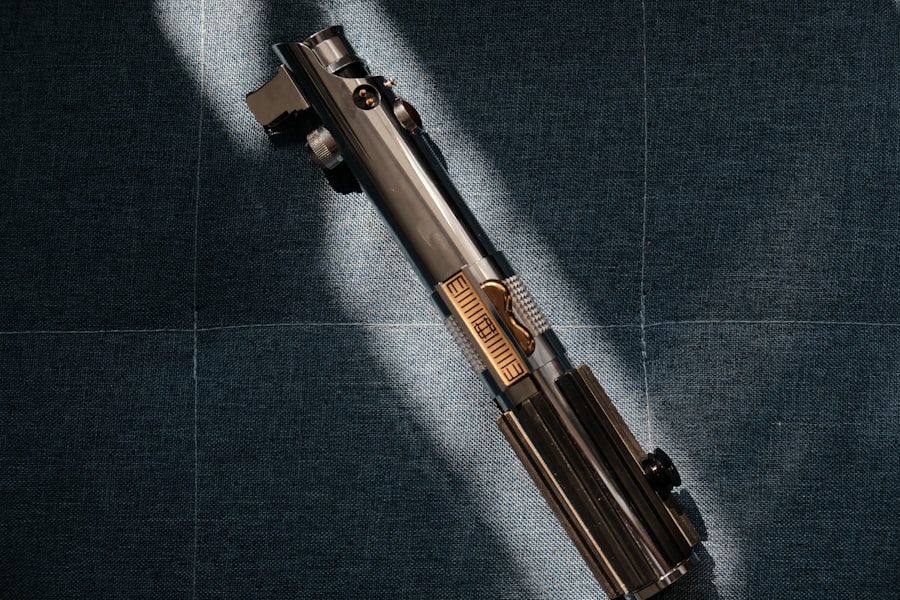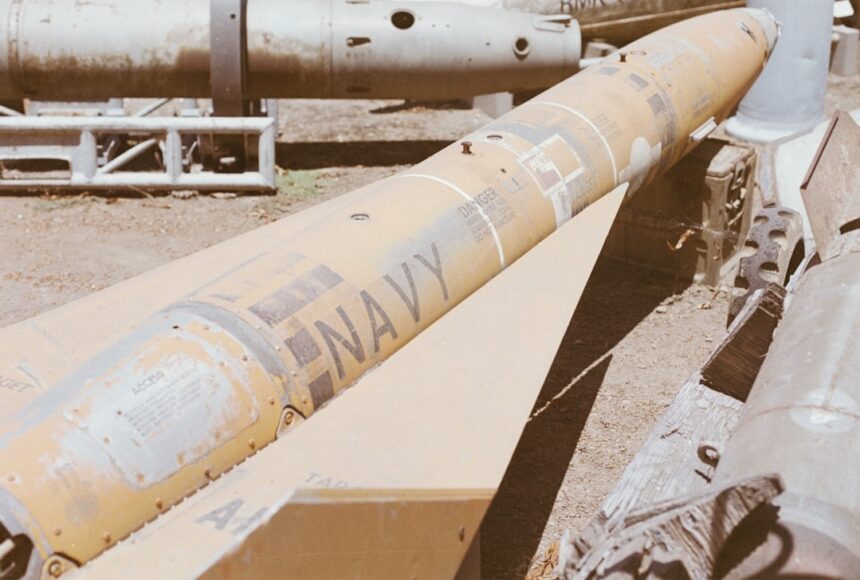Precision-guided munitions (PGMs) have revolutionized modern warfare, transforming the landscape of military operations. These advanced weapons systems are designed to strike specific targets with a high degree of accuracy, minimizing collateral damage and maximizing operational effectiveness. The advent of PGMs has not only changed the way conflicts are fought but has also influenced military strategy and tactics on a global scale.
As nations invest in these technologies, the implications for international security and warfare dynamics become increasingly significant. The concept of precision in munitions is rooted in the desire to enhance the effectiveness of military operations while reducing unintended consequences. Traditional unguided munitions often resulted in widespread destruction and civilian casualties, leading to a growing demand for more accurate alternatives.
PGMs utilize various guidance systems, including GPS, laser guidance, and inertial navigation, to ensure that they hit their intended targets with remarkable precision. This capability has made them indispensable tools for modern militaries, allowing for surgical strikes that can neutralize threats without causing extensive collateral damage.
Key Takeaways
- Precision-guided munitions have revolutionized modern warfare by increasing accuracy and reducing collateral damage.
- The evolution of precision-guided munitions has seen advancements in technology, leading to enhanced targeting capabilities and increased lethality.
- Current state of precision-guided munitions technology includes integration of artificial intelligence and advancements in guidance systems.
- Advantages of precision-guided munitions include improved effectiveness, reduced risk to friendly forces, and minimized civilian casualties.
- Challenges and limitations of precision-guided munitions involve cost, vulnerability to electronic warfare, and the need for continuous technological advancements.
Evolution of Precision-Guided Munitions
The evolution of precision-guided munitions can be traced back to World War II, when the need for more accurate bombing techniques became apparent. Early attempts at precision bombing were rudimentary, relying on visual targeting and rudimentary guidance systems. However, the development of radar technology and advancements in electronics during the post-war period laid the groundwork for more sophisticated PGMs.
The Vietnam War marked a significant turning point, as the United States began deploying laser-guided bombs, which demonstrated the potential for precision strikes in combat. As technology progressed, so did the capabilities of PGMs. The Gulf War in the early 1990s showcased the effectiveness of precision-guided munitions on a large scale, with reports indicating that over 80% of munitions used were guided.
This conflict highlighted the advantages of PGMs in achieving military objectives with minimal collateral damage. The subsequent years saw further advancements in guidance systems, including the integration of satellite navigation and advanced sensors, which enhanced the accuracy and reliability of these weapons.
Current State of Precision-Guided Munitions Technology

Today, precision-guided munitions represent a sophisticated blend of cutting-edge technology and military strategy. The current state of PGM technology encompasses a wide range of systems, from air-to-ground missiles to naval artillery shells, all designed to deliver pinpoint strikes against enemy targets. Modern PGMs are equipped with advanced guidance systems that utilize GPS and inertial navigation to ensure accuracy even in challenging environments.
This technological sophistication allows for strikes in urban settings or against moving targets, where traditional munitions would struggle to achieve effectiveness. Moreover, the integration of advanced materials and miniaturization techniques has led to the development of smaller, lighter munitions that retain high levels of lethality. These innovations have made it possible for military forces to deploy PGMs from various platforms, including unmanned aerial vehicles (UAVs), fighter jets, and naval vessels.
The versatility of PGMs has made them a cornerstone of modern military arsenals, enabling forces to engage in a wide range of operations, from counter-terrorism missions to large-scale conventional warfare.
Advantages of Precision-Guided Munitions
| Advantages of Precision-Guided Munitions |
|---|
| 1. Increased accuracy |
| 2. Reduced collateral damage |
| 3. Improved target destruction |
| 4. Enhanced mission success rate |
| 5. Greater operational flexibility |
The advantages of precision-guided munitions are manifold and have fundamentally altered the approach to military engagements. One of the most significant benefits is the reduction in collateral damage. By striking specific targets with high accuracy, PGMs minimize the risk of harming civilians and damaging infrastructure that is not directly related to military objectives.
This capability is particularly crucial in contemporary conflicts where urban warfare is prevalent, as it allows military forces to operate with greater restraint and legitimacy. Additionally, PGMs enhance operational effectiveness by increasing the likelihood of mission success. The ability to accurately engage targets reduces the number of munitions required to achieve desired outcomes, leading to more efficient use of resources.
This efficiency not only conserves ammunition but also reduces logistical burdens on military operations. Furthermore, the psychological impact of precision strikes can deter adversaries and bolster the confidence of allied forces, contributing to overall strategic advantages in conflict scenarios.
Challenges and Limitations of Precision-Guided Munitions
Despite their numerous advantages, precision-guided munitions are not without challenges and limitations. One significant concern is the reliance on technology that can be vulnerable to countermeasures. Adversaries may employ tactics such as electronic warfare or camouflage to disrupt GPS signals or obscure targets, potentially diminishing the effectiveness of PGMs.
Additionally, the high cost associated with developing and deploying advanced munitions can strain military budgets, particularly for nations with limited resources. Another challenge lies in the ethical implications surrounding their use. While PGMs are designed to minimize civilian casualties, there remains a risk that their deployment could lead to unintended consequences.
The perception that precision strikes are “clean” may lead to an overreliance on these weapons in complex conflict situations where nuanced decision-making is required. As militaries continue to grapple with these ethical dilemmas, it becomes essential to balance technological capabilities with responsible use in warfare.
Future Developments in Precision-Guided Munitions

The future of precision-guided munitions promises exciting developments driven by ongoing advancements in technology and warfare strategies. One area poised for growth is the integration of artificial intelligence (AI) into PGM systems. AI has the potential to enhance targeting capabilities by analyzing vast amounts of data in real-time, allowing for quicker decision-making and improved accuracy in dynamic combat environments.
This integration could lead to autonomous systems capable of identifying and engaging targets with minimal human intervention. Moreover, as nations continue to invest in research and development, new materials and manufacturing techniques will likely emerge, further enhancing the performance of PGMs. Innovations such as 3D printing may enable rapid prototyping and production of advanced munitions tailored for specific missions.
Additionally, advancements in propulsion systems could lead to faster and more agile munitions capable of engaging targets at greater distances or in more challenging conditions.
Integration of Artificial Intelligence in Precision-Guided Munitions
The integration of artificial intelligence into precision-guided munitions represents a transformative shift in military capabilities. AI can significantly enhance targeting algorithms by processing data from various sources, including satellite imagery, reconnaissance drones, and battlefield sensors. This capability allows for real-time analysis and decision-making that can adapt to changing conditions on the ground.
As a result, AI-driven PGMs could identify high-value targets more effectively while minimizing risks associated with collateral damage. Furthermore, AI can facilitate improved communication between different military assets involved in an operation. By enabling seamless data sharing among aircraft, ground forces, and command centers, AI can enhance situational awareness and coordination during complex missions.
This interconnectedness not only increases operational efficiency but also allows for more precise engagement strategies that take into account multiple variables on the battlefield.
Enhanced Targeting Capabilities in Precision-Guided Munitions
Enhanced targeting capabilities are at the forefront of advancements in precision-guided munitions technology. Modern PGMs are equipped with sophisticated sensors that provide real-time feedback on target conditions and environmental factors. These sensors can include infrared imaging, radar systems, and electro-optical targeting systems that allow for precise identification and engagement even under adverse weather conditions or during nighttime operations.
Additionally, advancements in data fusion techniques enable PGMs to combine information from multiple sources for improved targeting accuracy. By integrating data from various platforms—such as UAVs conducting reconnaissance missions or ground-based sensors—military forces can create a comprehensive picture of the battlefield. This enhanced situational awareness allows for more informed decision-making regarding target selection and engagement strategies.
Miniaturization and Increased Lethality in Precision-Guided Munitions
Miniaturization has emerged as a key trend in the development of precision-guided munitions, leading to increased lethality without compromising effectiveness. Smaller munitions can be deployed from a wider array of platforms, including smaller UAVs or even man-portable systems operated by ground troops. This versatility allows for greater flexibility in operational planning and execution while maintaining high levels of accuracy.
Moreover, advancements in warhead design have contributed to increased lethality while minimizing collateral damage. New materials and explosive formulations enable smaller warheads to achieve greater destructive power upon detonation. This capability allows military forces to engage fortified positions or high-value targets effectively without resorting to larger munitions that could cause extensive collateral damage.
Advancements in Guidance Systems for Precision-Guided Munitions
The evolution of guidance systems has been instrumental in enhancing the effectiveness of precision-guided munitions.
Furthermore, ongoing research into next-generation guidance technologies holds promise for even greater improvements in PGM performance. Emerging concepts such as quantum navigation could provide unprecedented levels of accuracy by leveraging quantum mechanics principles to determine position without reliance on external signals like GPS. Such advancements could revolutionize how precision-guided munitions are deployed in future conflicts.
The Impact of Precision-Guided Munitions on Modern Warfare
The impact of precision-guided munitions on modern warfare cannot be overstated; they have fundamentally altered how military operations are conducted across the globe. By enabling forces to engage targets with remarkable accuracy while minimizing collateral damage, PGMs have reshaped military strategy and tactics in profound ways. As technology continues to evolve—particularly with advancements in artificial intelligence and guidance systems—the capabilities of PGMs will only expand further.
However, alongside these advancements come ethical considerations that must be addressed by military leaders and policymakers alike. The reliance on precision strikes necessitates a careful balance between technological capabilities and responsible use in complex conflict scenarios. As nations navigate this evolving landscape, understanding both the potential benefits and challenges associated with precision-guided munitions will be crucial for shaping future military engagements and ensuring global security.
In exploring the future of precision-guided munitions, it’s essential to consider the broader context of modern warfare and technological advancements. An insightful related article can be found on the website “In The War Room,” which delves into various aspects of military technology and strategy. For a deeper understanding of how precision-guided munitions fit into the evolving landscape of defense, you can read more about these topics by visiting In The War Room. This resource provides a comprehensive look at the innovations shaping the future of military operations and the strategic implications of these advancements.
FAQs
What are precision-guided munitions (PGMs)?
Precision-guided munitions (PGMs) are weapons that have a guidance system to accurately hit a specific target. This can include missiles, bombs, and artillery shells.
How do precision-guided munitions work?
PGMs use various guidance systems such as GPS, laser, or inertial navigation to accurately guide the munition to its intended target. This allows for greater accuracy and reduced collateral damage.
What are the advantages of precision-guided munitions?
The use of precision-guided munitions allows for more accurate targeting, reduced collateral damage, and increased effectiveness in hitting specific targets. This can result in lower civilian casualties and reduced infrastructure damage.
What is the future of precision-guided munitions?
The future of precision-guided munitions is likely to involve advancements in technology, such as improved guidance systems, increased range, and enhanced capabilities for autonomous targeting. Additionally, there may be developments in miniaturization and cost reduction to make PGMs more accessible to a wider range of military forces.




